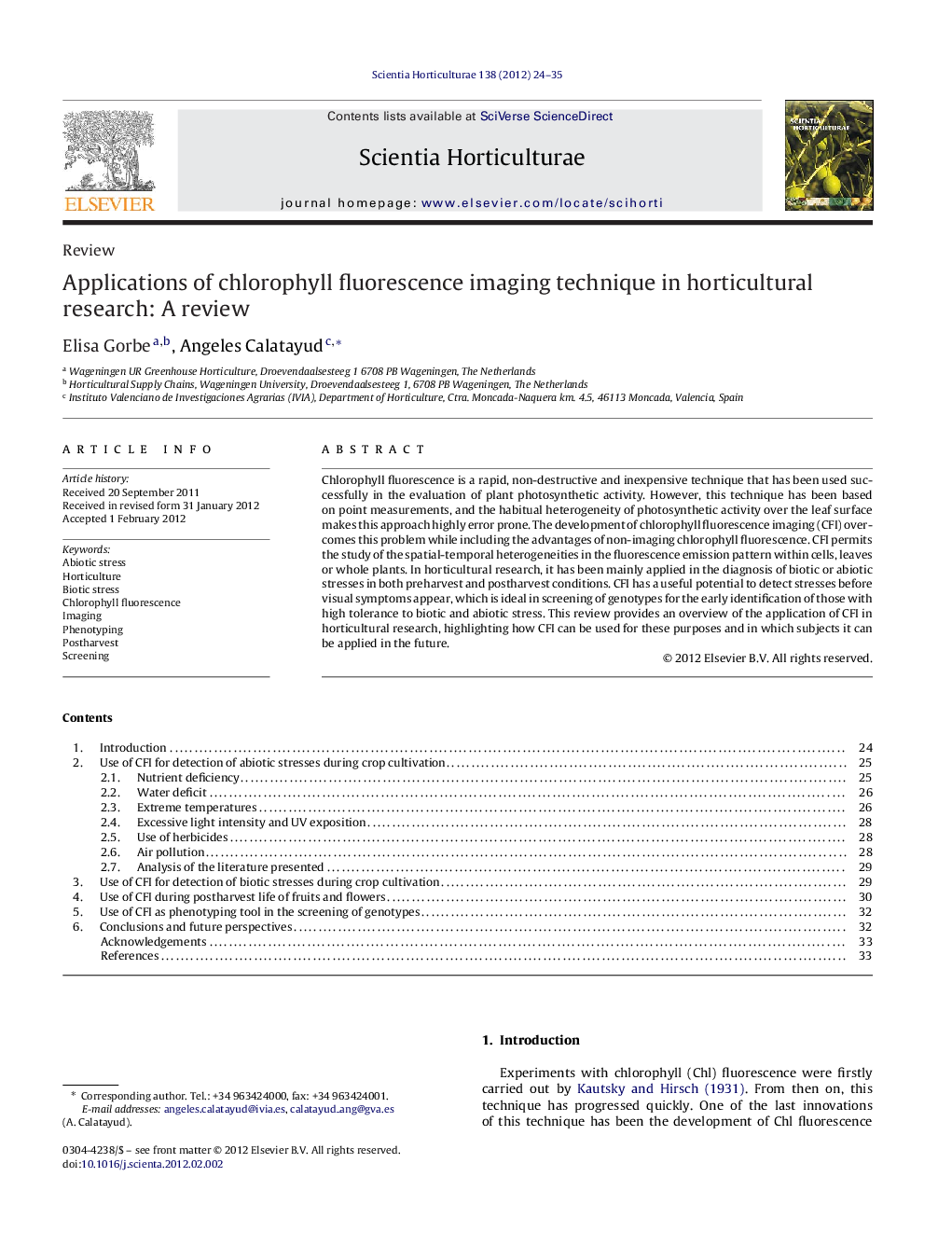| کد مقاله | کد نشریه | سال انتشار | مقاله انگلیسی | نسخه تمام متن |
|---|---|---|---|---|
| 4567690 | 1628860 | 2012 | 12 صفحه PDF | دانلود رایگان |

Chlorophyll fluorescence is a rapid, non-destructive and inexpensive technique that has been used successfully in the evaluation of plant photosynthetic activity. However, this technique has been based on point measurements, and the habitual heterogeneity of photosynthetic activity over the leaf surface makes this approach highly error prone. The development of chlorophyll fluorescence imaging (CFI) overcomes this problem while including the advantages of non-imaging chlorophyll fluorescence. CFI permits the study of the spatial-temporal heterogeneities in the fluorescence emission pattern within cells, leaves or whole plants. In horticultural research, it has been mainly applied in the diagnosis of biotic or abiotic stresses in both preharvest and postharvest conditions. CFI has a useful potential to detect stresses before visual symptoms appear, which is ideal in screening of genotypes for the early identification of those with high tolerance to biotic and abiotic stress. This review provides an overview of the application of CFI in horticultural research, highlighting how CFI can be used for these purposes and in which subjects it can be applied in the future.
► Chlorophyll fluorescence imaging permits the study of the spatial-temporal heterogeneities in the fluorescence emission pattern within cells, leaves or whole plants.
► In horticultural research, it has been mainly applied in the diagnosis of biotic or abiotic stresses in both preharvest and postharvest conditions, for the detection of biotic or abiotic stresses in plants or plant products.
► This review shows the great potential of CFI as a very useful in horticulture and indicates in which subjects it can be applied in the future.
Journal: Scientia Horticulturae - Volume 138, 1 May 2012, Pages 24–35